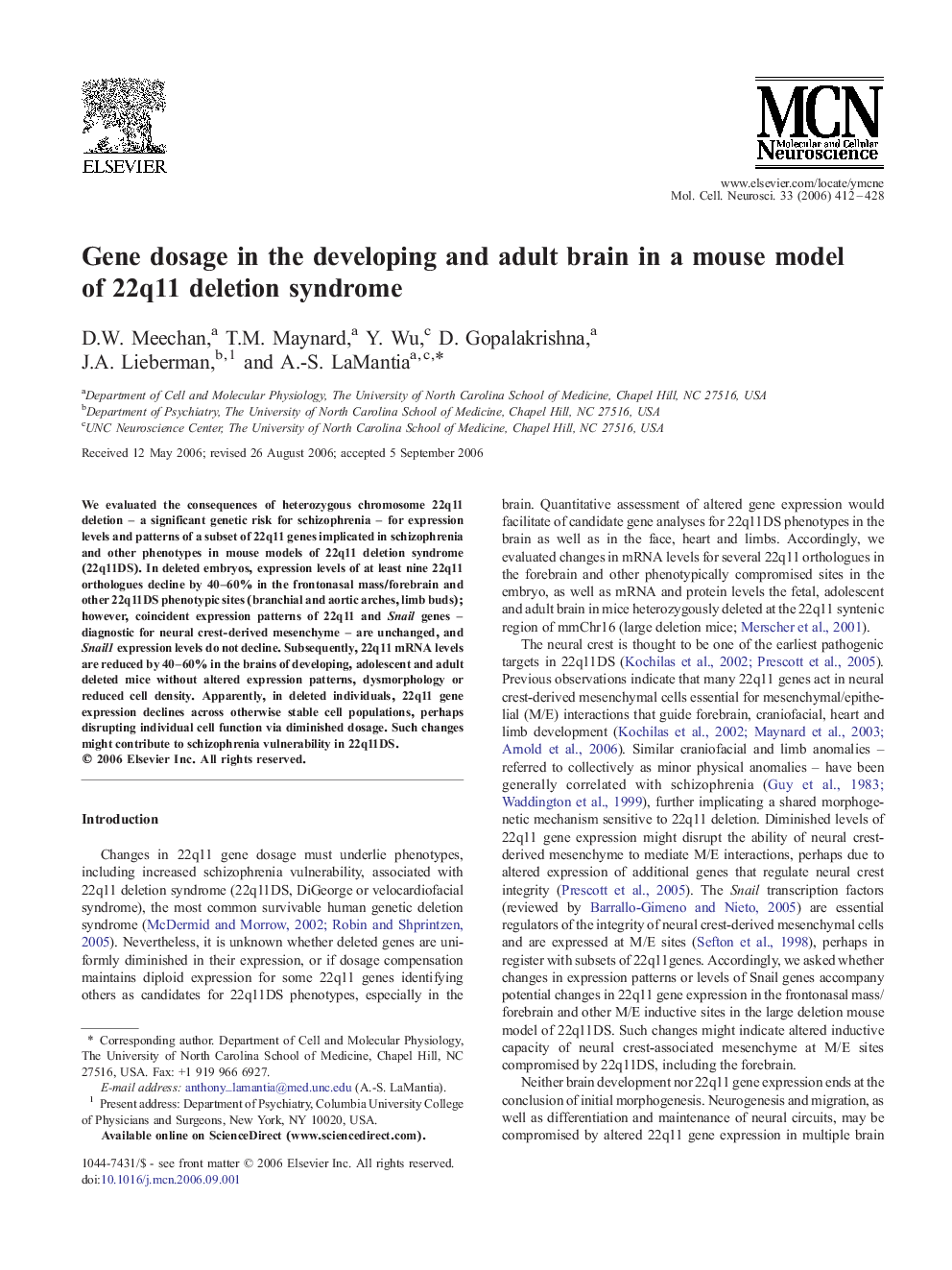| Article ID | Journal | Published Year | Pages | File Type |
|---|---|---|---|---|
| 2199352 | Molecular and Cellular Neuroscience | 2006 | 17 Pages |
We evaluated the consequences of heterozygous chromosome 22q11 deletion – a significant genetic risk for schizophrenia – for expression levels and patterns of a subset of 22q11 genes implicated in schizophrenia and other phenotypes in mouse models of 22q11 deletion syndrome (22q11DS). In deleted embryos, expression levels of at least nine 22q11 orthologues decline by 40–60% in the frontonasal mass/forebrain and other 22q11DS phenotypic sites (branchial and aortic arches, limb buds); however, coincident expression patterns of 22q11 and Snail genes – diagnostic for neural crest-derived mesenchyme – are unchanged, and Snail1 expression levels do not decline. Subsequently, 22q11 mRNA levels are reduced by 40–60% in the brains of developing, adolescent and adult deleted mice without altered expression patterns, dysmorphology or reduced cell density. Apparently, in deleted individuals, 22q11 gene expression declines across otherwise stable cell populations, perhaps disrupting individual cell function via diminished dosage. Such changes might contribute to schizophrenia vulnerability in 22q11DS.
